Costa Rica is home to an impressive 200+ volcanic formations, some dating to more than 65 million years. That said, only half show any signs of activity at all, and just a handful are classified as active volcanoes.
But first, a general overview: Costa Rica's volcanoes speckle the country's three volcanic ranges: the Guanacaste Volcanic Range (home to the Rincón de la Vieja, Orosi, Miravalles, Tenorio, and Arenal Volcanoes, among others); the Central Volcanic Range (comprised of the Poás, Barva, Irazú, and Turrialba Volcanoes, among others); and the Talamanca Volcanic Range (home to El Viejo Volcano).
But, back to active volcanoes in Costa Rica. Of the 200 volcanic formations, just seven are considered historically active: Rincón de la Vieja, Poás, Arenal, Irazú, Turrialba, and Tenorio, plus the not-so-active Miravalles, which emitted just a puff of steam way back in 1946. The things a volcano will do to be classified as active...
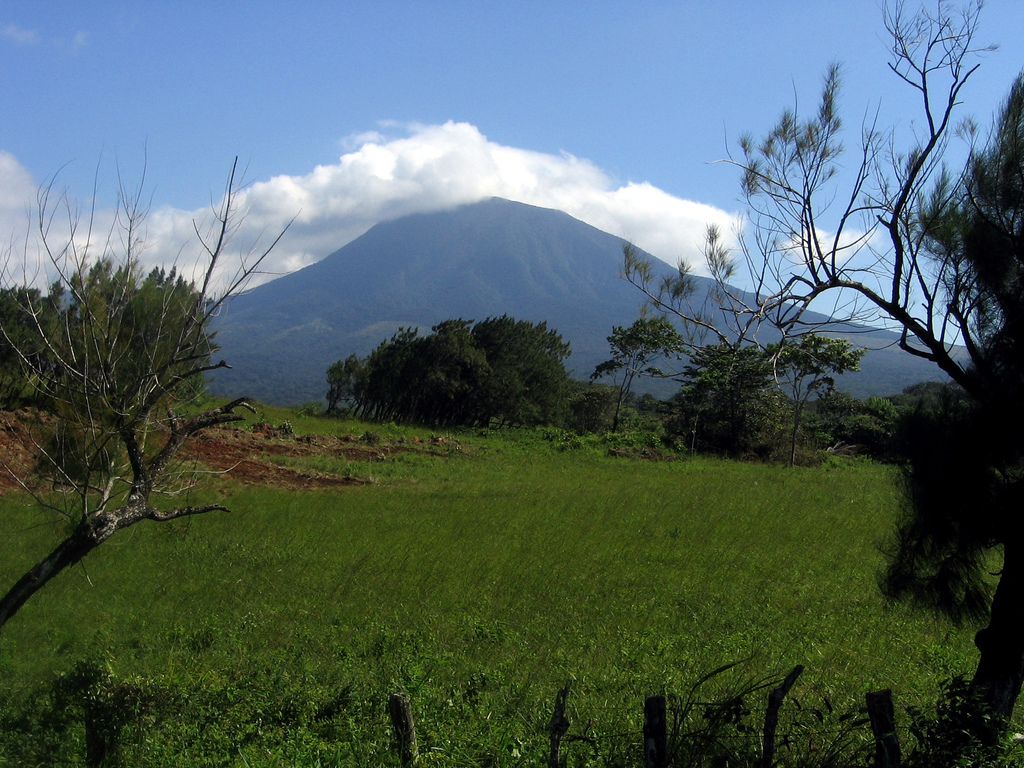
If you want to get active near Tamarindo, you can do no better than the extraordinary Rincón de la Vieja Volcano and its eponymous national park. Named for a tragic local legend – a young woman whose father threw her lover into the crater, thus the name the Old Woman's [Maid's] Corner – this andesitic complex volcano is located about 14 miles northeast of Liberia. (All told, it's just over 60 miles/2 hours from Tamarindo.) And it's arguably our favorite of Costa Rica's active volcanoes. Today, this 1-million-year-old volcano offers one of the hottest – and there's just no better word for it – national park trails in Costa Rica, if not the world. It all starts at Costa Rica's hidden gem: Las Pailas and its trail, which shows off some of the park's best attractions: take in steaming fumaroles, where volcanic gases escape through cracks in the ground; look into the mouth of a volcancito, or mini-volcano; and get contemplative at the boiling mud pots, where subterranean volcanic heat causes the ground to boil. This 3.4-mile loop through the park takes about two hours. The park's secondary trail, Sendero Cangreja, winds past roaring waterfalls (note: in green season) and cascade into cold-water lagoons, and swimming holes. Must-photograph highlights include the ever-popular La Cangreja Waterfall and the Hidden Waterfalls. Both sections of the park sport hot springs purported to have medicinal properties; relieve your aches and pains as you soak your way to zen.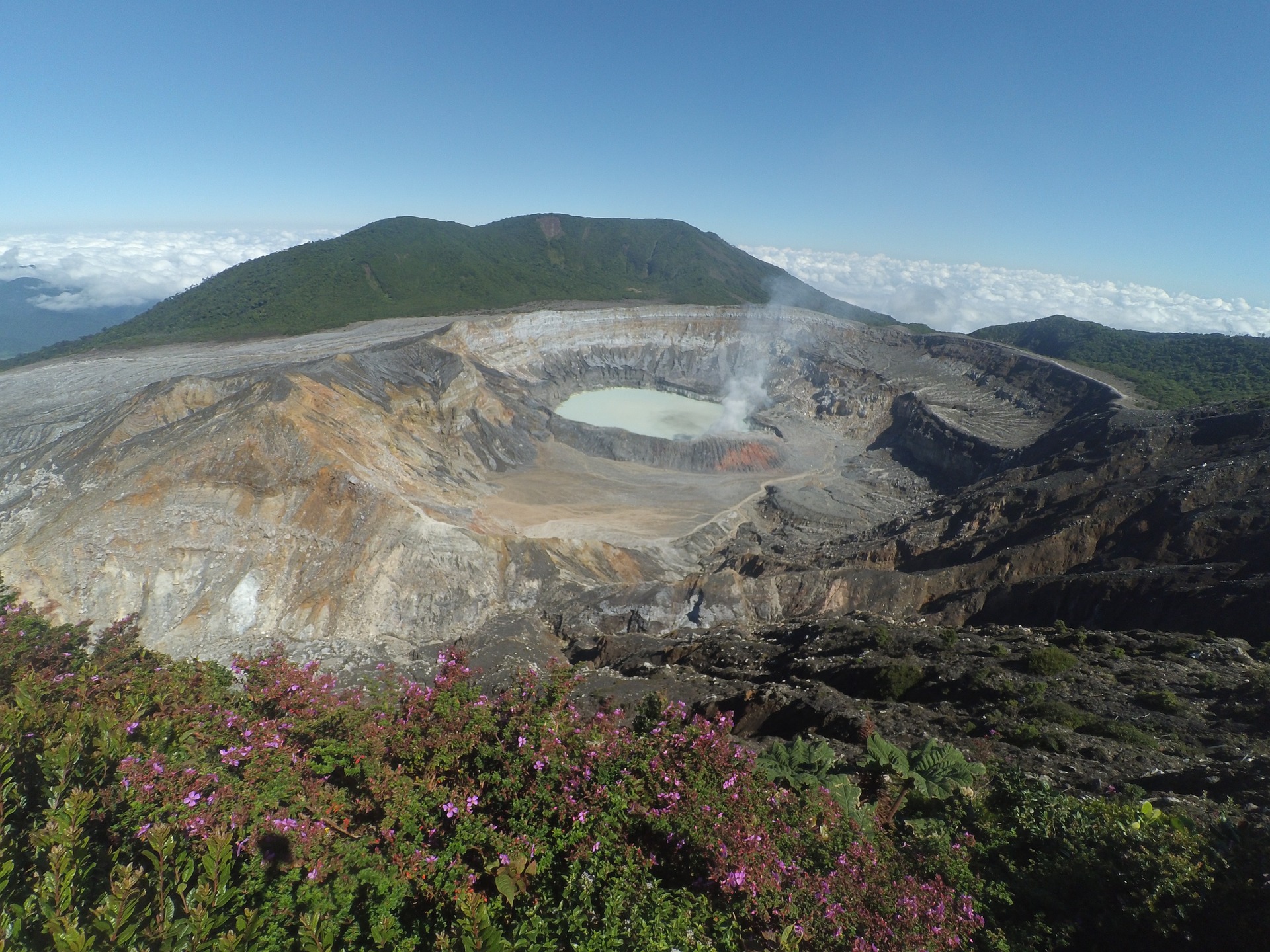
Standing tall over the Central Valley, this stratovolcano and its parent Poás Volcano National Park was Costa Rica's most-visited national park until 2017, when it roared to life with an ashy fury. Though Poás had registered 40 eruptions since 1828, the 2017 ash cloud evacuated towns and caused the park to close indefinitely; as of 2018, Poás Volcano is still actively active and Poás Volcano National Park is still closed to visitors. The volcano's primary draw is its sensational and spectacular cerulean lake, which dips 1,000 feet into the world's second-widest crater (9/10 of a mile long!), to form the world's largest volcanic lagoon. Talk about a superlative volcano! There's a second crater, and a second cold-water lagoon, just a 5-minute walk from the first. What's more, Poás Volcano National Park is one of the country's best equipped, with wheelchair-accessible paved trails, puffing fumaroles, and even food facilities. Be sure to visit very early in the morning, preferably from May through November, to catch the best (and clearest) views of Poás's main crater and lagoon.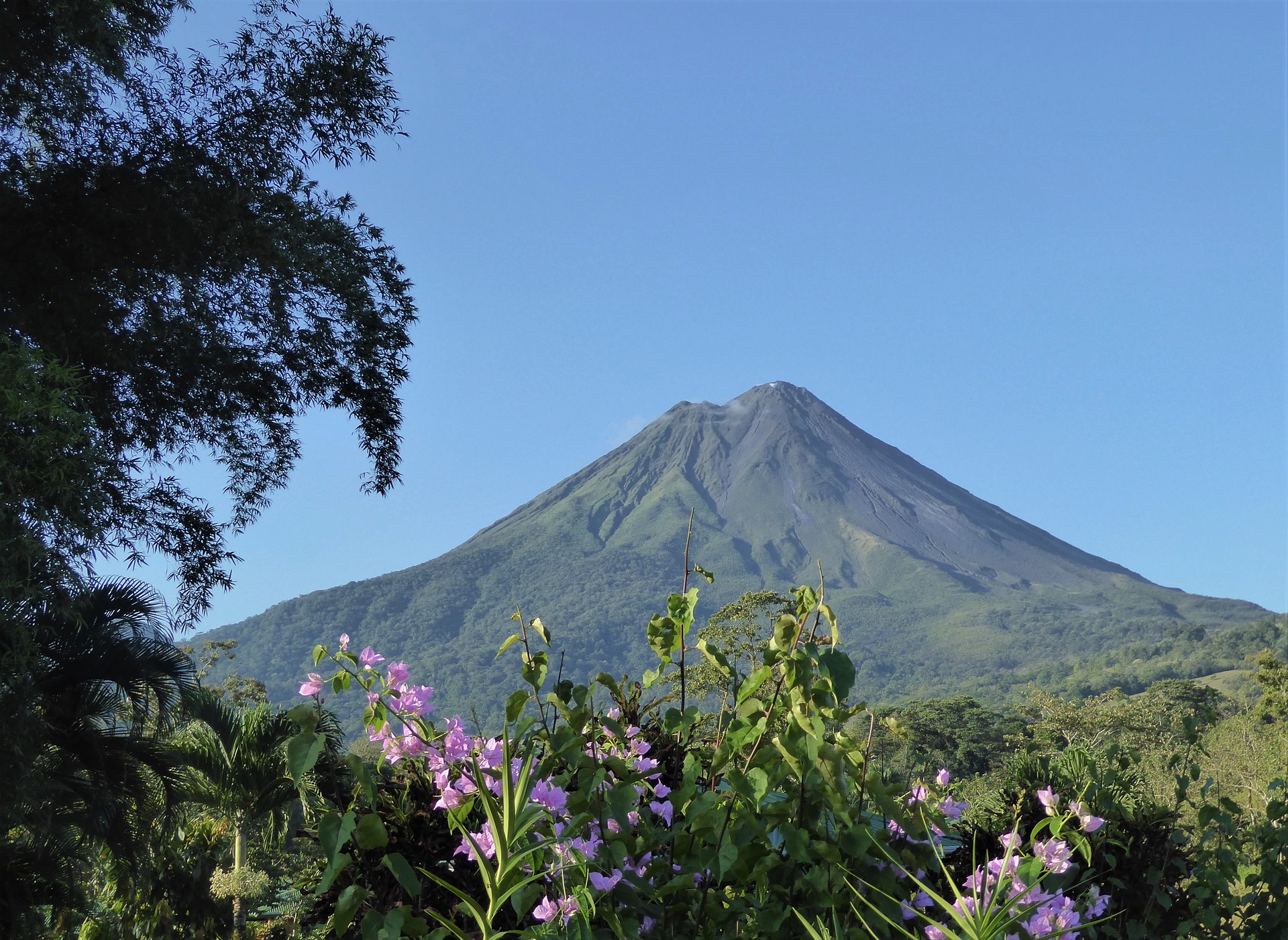
Undoubtedly Costa Rica's most popular and photographed volcano, Arenal is renowned for its once-daily lava flows, which were easily visible on clear nights. While Arenal Volcano has not spewed its spectacular and fiery display since 2010, the volcano and its base camp town of La Fortuna remain one of the country's most popular adventure destinations. Arenal is an andesitic stratovolcano that sat [evidently] dormant until 1968, at which time it awoke with a vengeance and bathed its slopes in hot lava, volcanic rock, and ash, beating a swath of destruction through neighboring towns. The eruption decimated the town of Tabacón and birthed three new craters, forever changing the shape of the volcano and its surrounding landscape. Today, Arenal Volcano, now the center point of Arenal Volcano National Park, may not put on daily lava shows, but the quietly active volcano does fuel naturally fed, rumored-therapeutic hot springs – some of the most beautiful, soothing, and relaxing spots in the entire country. Seeing the volcano itself can be hit or miss, but for best chances, swing by in September or October.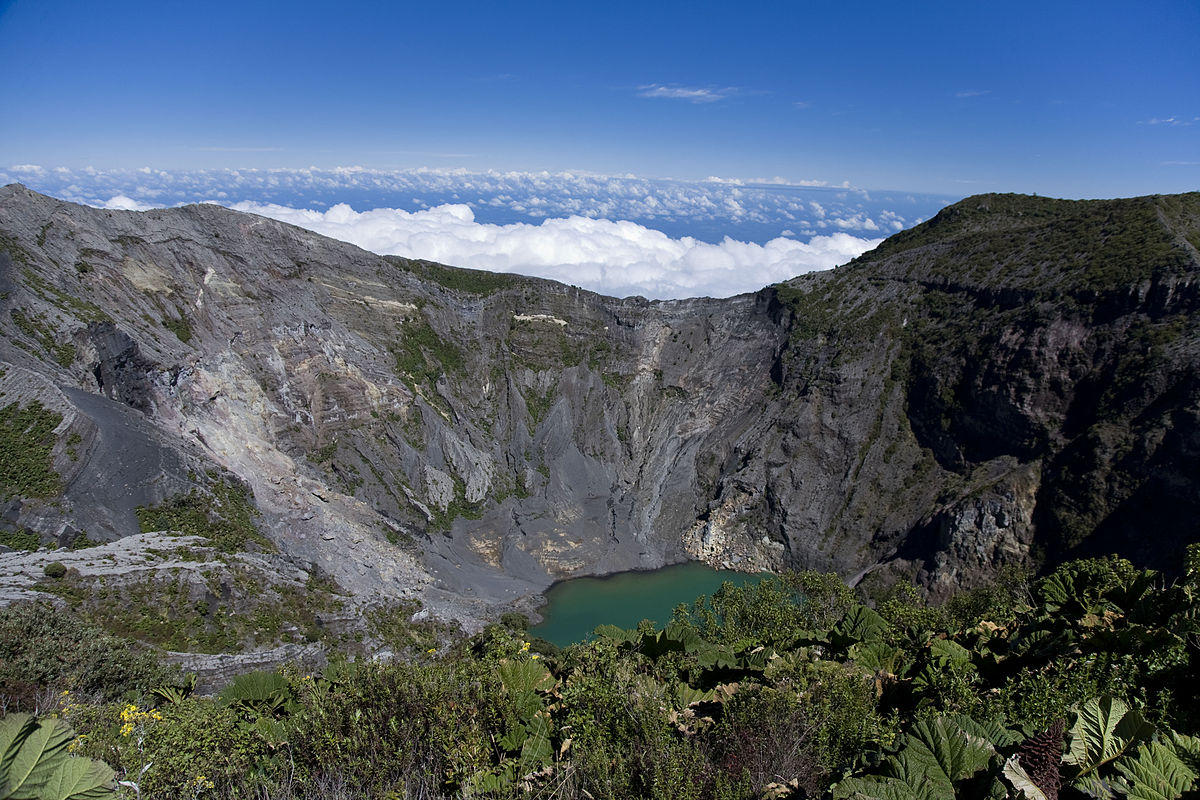
Located east of San José, near the city of Cartago (side note: Costa Rica's first capital city!), Irazú Volcano is a stratovolcano and one of Costa Rica's most photogenic volcanoes, thanks to its iridescent green-blue (and/or red, depending on the current mineral concentrations) lake at its center. Not one to rest on its laurels, Irazu – a derivative of a local indigenous word for thunder and earthquake peak or mountain – is Costa Rica's tallest volcano, clocking in at a sky-high 11,260 feet above sea level. (That's 2.13 miles in the sky!) Of its five (!) craters, the main and largest crater spans an impressive 3,345 feet and has been active for more than 500 years; that said, Irazú Volcano was last active on March 19, 1963, when then-President John. F. Kennedy was in the country on a state visit. In addition to its striking crater lake, Irazu's second claim to fame is its sub-alpine paramo and high-altitude rainforest ecosystems, which together resemble a barren and other-worldly moonscape. Make the climb early and on a sunny day (most common during the dry months of December-April) and with a bit of luck, you'll enjoy Irazu's final promise: simultaneous and sweeping views of both the Caribbean Sea and the Pacific Ocean.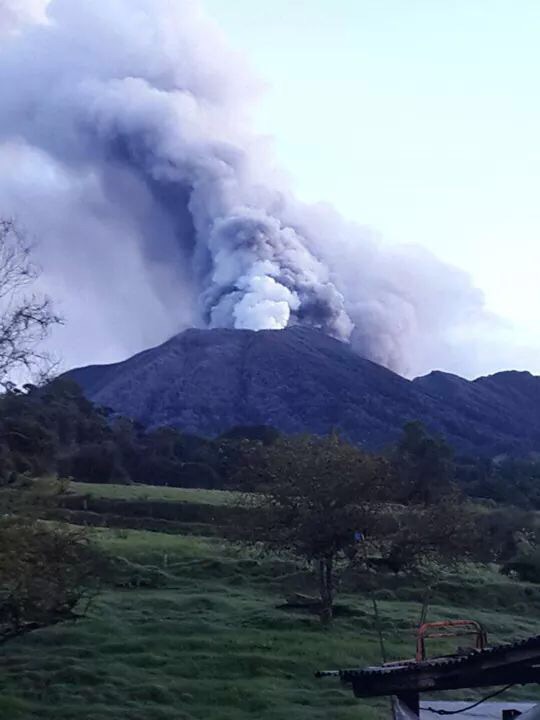
If you want active, let us introduce you to Turrialba Volcano. Sitting adjacent to Irazú, this powerful stratovolcano has morphed from sleeping giant to surprisingly and explosively eruptive over the last half-decade. Today, Turrialba is Costa Rica's most active volcano, coughing ash and steam every few weeks (and sometimes even daily). Before it shot to volcanic superstardom, Turrialba was known mostly for its barren landscapes and popular main crater – once hikeable but now decidedly off-limits. It's not just the one crater, though; Turrialba Volcano is home to three distinct craters, the widest of which stretches just 160 feet – small in comparison to big-daddy Poas, but not even close to small, at about half the length of a football field. Turrialba's eerie landscapes come courtesy of montane forest, where scrubby mosses, lichens, bromeliads, and ferns dominate. Interspersed, you'll find both primary and secondary forest – and, on clear days, startling views to both the Caribbean Sea and the Pacific Ocean.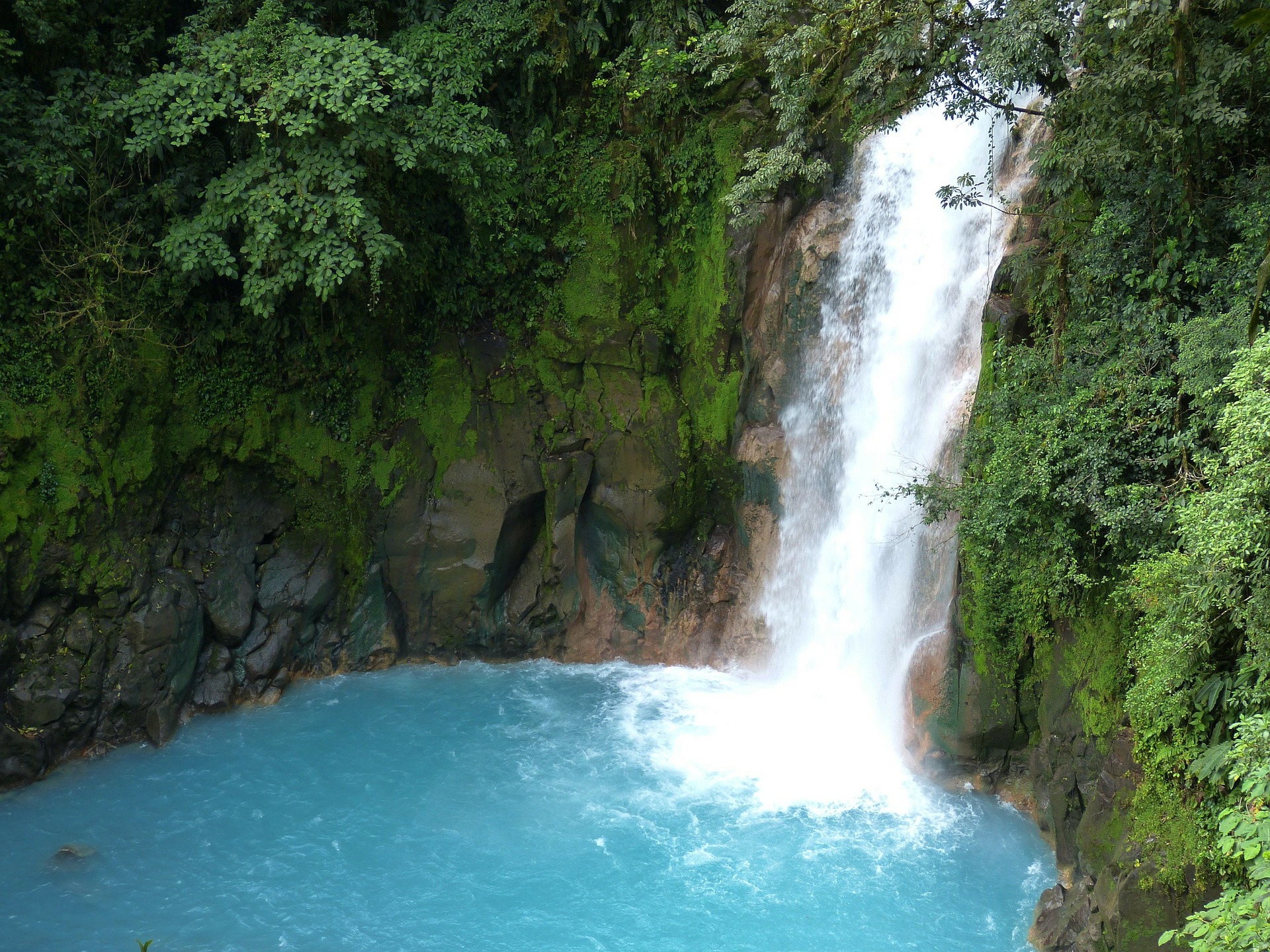
Tenorio Volcano National Park houses Tenorio Volcano and its more famous Río Celeste, or Celestial River, Costa Rica's much-photographed, baby-blue river and waterfall. But back to the volcano. Tenorio Volcano is home to an impressive four volcanic peaks and two craters, one of which is big enough to snag the nickname of Montezuma Volcano. All told, Tenorio Volcano stands 6,287 feet tall and presides over primary cloud forest, tropical rain forest, thermal hot springs, small geysers, and several rivers, waterfalls, lagoons, and scenic miradors (viewpoints). Now, about that special river. Río Celeste is undeniably one of Costa Rica's most photogenic sights, and it's all thanks to the volcano: sulfur emissions from the volcano + calcium carbonate in the precipitation = almost unbelievably light blue waters. This is really one you'll have to see to believe! But ask before you do; minor activity in early 2018 closed the park a handful of days. And that's that: Costa Rica's six most active volcanoes. Have you visited any (or all) of them? Which are your favorites? We're partial to Rincón de la Vieja, but the other five are wonderful, too!
Three Erupting Volcanoes – and Counting!
Wait, just three? Didn't we just say that Costa Rica has seven "active" volcanoes? Why yes, yes we did. Here's the deal: There's a big difference between an active volcano – that is, a volcano that shows any hint of activity (just rewind to our comment above about Miravalles Volcano, and you'll see what we mean) – and an actively erupting, furiously lava-licious, red-hot mountain. Right, so we have none of those. Thankfully! What we do have, though, are six active volcanoes that display regular eruptions – but not of the lava variety. (Or not much.) More often, Costa Rica's active volcanoes serve up hot gas, stinky ash, and steam. For some, on a fairly regular basis. And that, for some, means on a daily or weekly basis. Here's the bad-but-it's-really-good-news: If you're here to see one of Costa Rica's active volcanoes, you may be disappointed. Costa Rica takes its safety seriously, so when there's even the slightest hint of an impending eruption, parks and volcanoes close to the public. Turrialba Volcano National Park has been closed since 2014. Poás Volcano National Park has been closed since early 2017. Tenorio Volcano National Park is on watch. If you're in the area, however, you still have a great chance of catching great views of spewing steam and ash.Rincón de la Vieja Volcano

If you want to get active near Tamarindo, you can do no better than the extraordinary Rincón de la Vieja Volcano and its eponymous national park. Named for a tragic local legend – a young woman whose father threw her lover into the crater, thus the name the Old Woman's [Maid's] Corner – this andesitic complex volcano is located about 14 miles northeast of Liberia. (All told, it's just over 60 miles/2 hours from Tamarindo.) And it's arguably our favorite of Costa Rica's active volcanoes. Today, this 1-million-year-old volcano offers one of the hottest – and there's just no better word for it – national park trails in Costa Rica, if not the world. It all starts at Costa Rica's hidden gem: Las Pailas and its trail, which shows off some of the park's best attractions: take in steaming fumaroles, where volcanic gases escape through cracks in the ground; look into the mouth of a volcancito, or mini-volcano; and get contemplative at the boiling mud pots, where subterranean volcanic heat causes the ground to boil. This 3.4-mile loop through the park takes about two hours. The park's secondary trail, Sendero Cangreja, winds past roaring waterfalls (note: in green season) and cascade into cold-water lagoons, and swimming holes. Must-photograph highlights include the ever-popular La Cangreja Waterfall and the Hidden Waterfalls. Both sections of the park sport hot springs purported to have medicinal properties; relieve your aches and pains as you soak your way to zen.
Poás Volcano

Standing tall over the Central Valley, this stratovolcano and its parent Poás Volcano National Park was Costa Rica's most-visited national park until 2017, when it roared to life with an ashy fury. Though Poás had registered 40 eruptions since 1828, the 2017 ash cloud evacuated towns and caused the park to close indefinitely; as of 2018, Poás Volcano is still actively active and Poás Volcano National Park is still closed to visitors. The volcano's primary draw is its sensational and spectacular cerulean lake, which dips 1,000 feet into the world's second-widest crater (9/10 of a mile long!), to form the world's largest volcanic lagoon. Talk about a superlative volcano! There's a second crater, and a second cold-water lagoon, just a 5-minute walk from the first. What's more, Poás Volcano National Park is one of the country's best equipped, with wheelchair-accessible paved trails, puffing fumaroles, and even food facilities. Be sure to visit very early in the morning, preferably from May through November, to catch the best (and clearest) views of Poás's main crater and lagoon.
Arenal Volcano

Undoubtedly Costa Rica's most popular and photographed volcano, Arenal is renowned for its once-daily lava flows, which were easily visible on clear nights. While Arenal Volcano has not spewed its spectacular and fiery display since 2010, the volcano and its base camp town of La Fortuna remain one of the country's most popular adventure destinations. Arenal is an andesitic stratovolcano that sat [evidently] dormant until 1968, at which time it awoke with a vengeance and bathed its slopes in hot lava, volcanic rock, and ash, beating a swath of destruction through neighboring towns. The eruption decimated the town of Tabacón and birthed three new craters, forever changing the shape of the volcano and its surrounding landscape. Today, Arenal Volcano, now the center point of Arenal Volcano National Park, may not put on daily lava shows, but the quietly active volcano does fuel naturally fed, rumored-therapeutic hot springs – some of the most beautiful, soothing, and relaxing spots in the entire country. Seeing the volcano itself can be hit or miss, but for best chances, swing by in September or October.
Irazú Volcano

Located east of San José, near the city of Cartago (side note: Costa Rica's first capital city!), Irazú Volcano is a stratovolcano and one of Costa Rica's most photogenic volcanoes, thanks to its iridescent green-blue (and/or red, depending on the current mineral concentrations) lake at its center. Not one to rest on its laurels, Irazu – a derivative of a local indigenous word for thunder and earthquake peak or mountain – is Costa Rica's tallest volcano, clocking in at a sky-high 11,260 feet above sea level. (That's 2.13 miles in the sky!) Of its five (!) craters, the main and largest crater spans an impressive 3,345 feet and has been active for more than 500 years; that said, Irazú Volcano was last active on March 19, 1963, when then-President John. F. Kennedy was in the country on a state visit. In addition to its striking crater lake, Irazu's second claim to fame is its sub-alpine paramo and high-altitude rainforest ecosystems, which together resemble a barren and other-worldly moonscape. Make the climb early and on a sunny day (most common during the dry months of December-April) and with a bit of luck, you'll enjoy Irazu's final promise: simultaneous and sweeping views of both the Caribbean Sea and the Pacific Ocean.
Turrialba Volcano

If you want active, let us introduce you to Turrialba Volcano. Sitting adjacent to Irazú, this powerful stratovolcano has morphed from sleeping giant to surprisingly and explosively eruptive over the last half-decade. Today, Turrialba is Costa Rica's most active volcano, coughing ash and steam every few weeks (and sometimes even daily). Before it shot to volcanic superstardom, Turrialba was known mostly for its barren landscapes and popular main crater – once hikeable but now decidedly off-limits. It's not just the one crater, though; Turrialba Volcano is home to three distinct craters, the widest of which stretches just 160 feet – small in comparison to big-daddy Poas, but not even close to small, at about half the length of a football field. Turrialba's eerie landscapes come courtesy of montane forest, where scrubby mosses, lichens, bromeliads, and ferns dominate. Interspersed, you'll find both primary and secondary forest – and, on clear days, startling views to both the Caribbean Sea and the Pacific Ocean.
Tenorio Volcano

Tenorio Volcano National Park houses Tenorio Volcano and its more famous Río Celeste, or Celestial River, Costa Rica's much-photographed, baby-blue river and waterfall. But back to the volcano. Tenorio Volcano is home to an impressive four volcanic peaks and two craters, one of which is big enough to snag the nickname of Montezuma Volcano. All told, Tenorio Volcano stands 6,287 feet tall and presides over primary cloud forest, tropical rain forest, thermal hot springs, small geysers, and several rivers, waterfalls, lagoons, and scenic miradors (viewpoints). Now, about that special river. Río Celeste is undeniably one of Costa Rica's most photogenic sights, and it's all thanks to the volcano: sulfur emissions from the volcano + calcium carbonate in the precipitation = almost unbelievably light blue waters. This is really one you'll have to see to believe! But ask before you do; minor activity in early 2018 closed the park a handful of days. And that's that: Costa Rica's six most active volcanoes. Have you visited any (or all) of them? Which are your favorites? We're partial to Rincón de la Vieja, but the other five are wonderful, too!


